There is a natural human impulse to order and subordinate the things of the world around us. What happens, however, if no element easily submits to this predominantly categorizing instinct? We cannot know for sure, but as always, we have come to develop the right term for this impression: chaos. Probably one of the clearest ways to observe the collision between chance and the definition given to chance is the one outlined by the relationship between contemporary art and what is written about contemporary art. How can one theoretically talk about something so vivid and diverse? The answer, in short, is simple: it is not possible. Unlike theory, only art manages to capture certain fragments of the intuition of a general chaos, without compromising their character. However, if even in the case of chaos there are theoretical ways of predicting or anticipating, then why would art be an exception?
This introduction is related to the latest exhibition at Atelier 35, entitled Hack my Cage. Following the presentation of the artist-curators Anastasia Calinovici and Marta Mattioli, the whole ensemble is thought in relation to the idea of heterogeneity and, why not, to a certain spontaneity specific to both individual artists and the way the works were selected. There were no initial criteria in choosing the individual elements of the exhibition, each artist being invited to participate with no more and no less than anything. What unites these multiple expressive instances is the common conceptual interest of the artists for contemporaneity and for capturing a human dimension, located at the hard limit of the non-human. The works appear as a series of repeated questions about how life is going at the moment, about the dissemination of visual content via the online environment (social media) and about our own internal filter, which too often becomes overloaded.
The idea of chaos, or that of “randomness” is ubiquitous in the exhibition, either in relation to an artificial conception of order, or directly, as is the case with the work You Were Visited by a Ghost by Anastasia Calinovici. The ability to predict or anticipate and control chaos is a defining feature of most artificial intelligence systems. In the process of generating the ghost image, randomness is a controllable element according to which the algorithm processes and mixes features in more or less random ways. Increasing randomness means, in short, increasing the number of reference images taken into account when generating the work. Finally, through multiple manipulations, an ethereal and strange visual effect is obtained, an instance of a potential parallel reality; a reality ruled, in turn, by chaos. Another impulse is given by the uncertainty of perception in front of the unknown, composed of previously known parts, but completely unrecognizable. You Were Visited by a Ghost brings to mind the fact that such appearances lead to a kind of reliving a feeling of a mystical nature, where the infinity of possibilities is directly confronted through the viewer-object relationship.
The same spirit is carried out by Tudor Ciurescu in the work 3Way. Through a somewhat similar process, that is, by overlapping the features of the three Mikes (Michael Jackson, Mike Tyson and Michael Jordan) the same tension is created, based on blocking the cognitive process at the border between knowledge and recognition, between order and conceptual chaos. A similar effect occurs on social media, when, after scrolling for a certain amount of time, all images, descriptions and #s seem to be received only peripherally, passively. The result is a kind of indefinite amalgam of features and objects, which end up overlapping and merging into an overall image of the feed. The same effect occurs on a larger scale, after each day in which we are accustomed to being constantly bombarded by a wide range of stimuli. 3 Way can bring to mind precisely this result of trying to impose an order on the information chaos that governs our existence. The parallel positioning with another work, Still Life # 3, is not accidental, given that that classical composition, set in the context of the artist’s room, appears as an expression of nostalgia for a past simplicity, typical of a declining visual tradition. Any tendency to romanticize the image is shattered immediately, by replacing the vase with the plastic of Soylent glass. The “Still” in “Still Life” can refer, through a play of words, to a resigned acceptance of contemporaneity that is “still alive” without specifying, however, for how long.
To continue this exploration of chaos in order, the next exhibition landmark is the painting Skydiver by Radu Pandele. The interdisciplinarity recognized throughout the show can also be found here, with the work packed with visual indications of other artistic areas such as digital art. This connection can be immediately intuited, by looking at the sky so similar to the “base sky” of Unreal Engine. Another element specific to 3D renderings seen in Skydiver is the use of textures to suggest materiality, firstly by adding auxiliary elements, such as plastic and cardboard, and then, pictorially, via the metallic aspect of the human figures, the safety pin, mixed in with glass. The main feeling given by these formal reports is that of a first draft rendering of a project full of errors, from the overlapping elements, to how the material is applied. The aesthetics of errors, taken over by the broader category of post-internet aesthetics, precisely follows the fallibility of the digital environment and the relationship between reality and the virtual. By exposing the internal processes of some programs with the help of the classical medium of oil painting on canvas, Skydiver manages to outsource a certain fundamental truth, corresponding to a visual experience in the digital field. This simulation of a simulation highlights a certain conceptual pattern within the construction of media reality.
If through error and chaos certain instances of truth and order can be born, thanks to human mediation, then the two works by Giulia Cretulescu under the common name of Body and Senses – Understanding Things Retroactively come together in consolidating this conclusion. In relation to the uninterrupted flow of information, man, understood as a complex biological system, merges with the virtual environment, processing and translating experiences. The material impression of the foil used as a frame is that of fusion between natural and artificial. The organic feel comes from how the sheets were cut and modeled, mediating the contact between the meta-universe of the works and the plain of reality. An adjacent work, that of Antonia Corduneanu, Under The Flesh of My Skin Sunbeams From Some Golden Hour Land has a similar material feel to it. It is not only the metallic quality that connects the works, but also the meaning they outline in relation to the body-sensation binomial, a characteristic of living within the contemporary context, hyper-saturated with stimuli. If in the case of Body and Senses… there is a kind of general human idealization of this relationship, here, the emphasis is on the dimension of internalization, of self-exploration. The metal window speculates a transition from an interior to an exterior, and the heavy steel material refers to the restrictive nature of this transition. Moreover, from an anatomical point of view, the formal similarity of the window with the image of a chest x-ray gives a new meaning to the interior mentioned earlier, while offering an additional interpretation as to the choice of title.
The works proposed by David Pricob also appear as evidence of an inner exploration. The ensemble composed of three prints and two mini-sculptures talk about intuiting the absolute loneliness in which any individual is born and dies. All interpersonal relationships developed over time are petrified in memory, and will be eroded to the inevitable total decomposition. Each image highlights this pressing feeling of the relentless direction towards emptiness, towards the abandonment of humanity, both in relation to oneself and in the relations with the external world. The sculptures appear, in this sense, both as reminders of a lost past and as warnings against the consequences of the path taken. The feeling is tribal, almost ritualistic, with potential references to the practice of voodoo or other manifestations of magical thinking.
The works proposed by Sam Bloor and CUSCREW fall under a common niche, that of metacriticism of contemporary thought and image, although they differ radically, at least from the perspective of the manifestation’s direction. In the case of Australian artist Sam Bloor, his two works are reunited by the quote-manifesto Beyond The Gates of Time. The use of the exhibition space when displaying the photo in relation to the poster attaches a 3D sensation to that semantic “Beyond” in the title. The escape from time (and space) inevitably has to do with the invaluable impression of infinity, or the similar impression of emptiness, speculated in David Pricob’s ensemble, located in its immediate vicinity. The small photo positioned in relation to the gallery window and, therefore, to the pavement in the Old Center of Bucharest, opens the way to dozens of possible interpretations. The relationship between object and shadow can be reflected here as a critique between reality and the quasi-idealized and one-dimensional projection of reality, with reference to the words inscribed on the other side. At the opposite end is CUSCREW, with a dynamic critical approach rendered by 3D animation. Hinting at brands such as Monster and Dacia Logan, his work simulates the mutant environment of the Romanian “low-class” as similar to the American one. The result is absolutely ridiculous and funny, but it manages to capture, in the form of parody, the impulse to synchronize with the “West” resulting in the proximity of companies, trends, verbal expressions, etc. Thus, the idea of a personal self-portrait declared by the artist is, in fact, synthesized into the portrait of an entire generation.
Last but not least, Marta Mattioli manages to manipulate both the visual and auditory dynamic of the exhibition, with the installation Heart Like a Bag Full of Sand. Returning to the leitmotif given by the antithesis of chaos-order, in the case of this work, the chaos of objective diversity specific to contemporaneity is joined by a conceptual order imposed by the adjacent animation and sound. The rhythm of the well-known iphone ringtone is the element that, through obsessive repetition, manages to dominate the entire exhibition. The lack of response is the element that creates an almost tense atmosphere, with possible references to anxiety caused by the constant interpersonal contact mediated by current technology. The notification of a “missed call” is undermined by the perpetual process of a call that has no beginning or end. If You Were Visited By a Ghost aims to materialize an instance of an infinitely variable flow, then the installation Heart Like a Bag Full of Sand comes from the opposite direction to deny this flow, deconceptualizing it through an uniformizing, recurrent trance. The opposition between the weight of the sand, as a construction material, and the inflatable object raised above it is useful in outlining the general feeling of freedom and / or release.
The sad conclusion is that release is only apparent, as escaping one prison means entering another. In this sense, the title of the exhibition, Hack my Cage, acquires a double meaning. On the one hand, it brings to mind the newest global conceptual prison, given the hegemony of the online environment. On the other hand, it is speculated that by instrumentalizing technology in certain contexts, new potential realities and new ways of looking at the world can be obtained. It is important to be aware of both the restraining character, typical of a predominantly-technological world, and the possibility of liberation, which is also materialized through the understanding and manipulation of technology. It all depends on how we choose to order this escape from chaos.
The show Hack my Cage, curated by Anastasia Calinovici and Marta Mattioli, took place at Atelier 35 during December 20th 2021 – February 11th 2022. Artists: Anastasia Calinovici, Antonia Corduneanu, Cuscrew, David Pricob, Giulia Crețulescu, Marta Mattioli, Radu Pandele, Sam Bloor, Tudor Ciurescu.
POSTED BY
Tea Vindt
Tea is studying art history at the National University of Arts in Bucharest. After graduating from Tudor Vianu National College of Informatics, her path became more and more artistic as she first star...
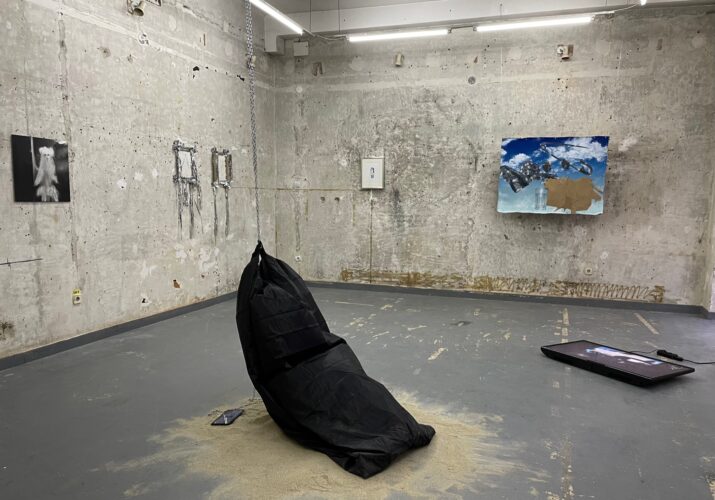
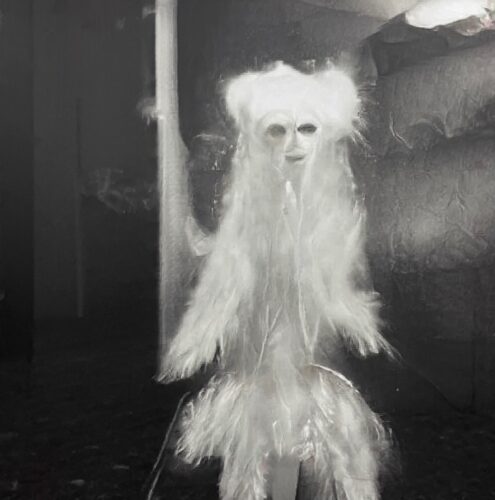
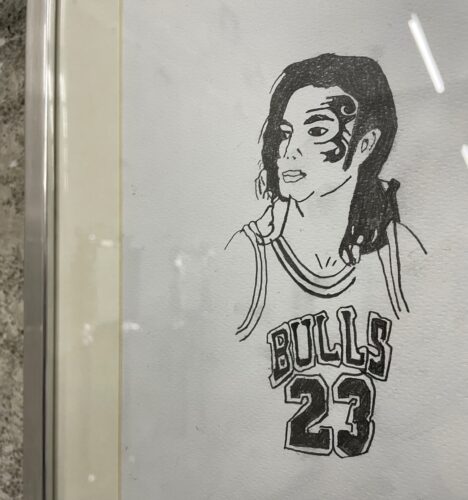
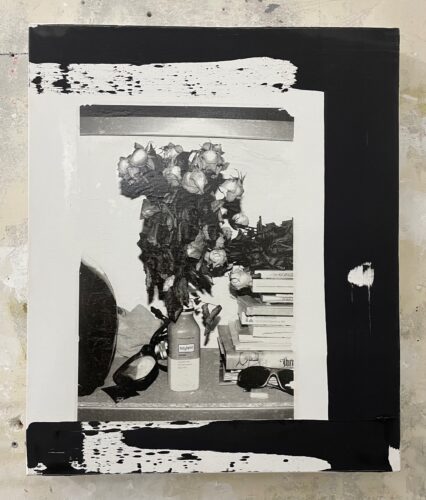
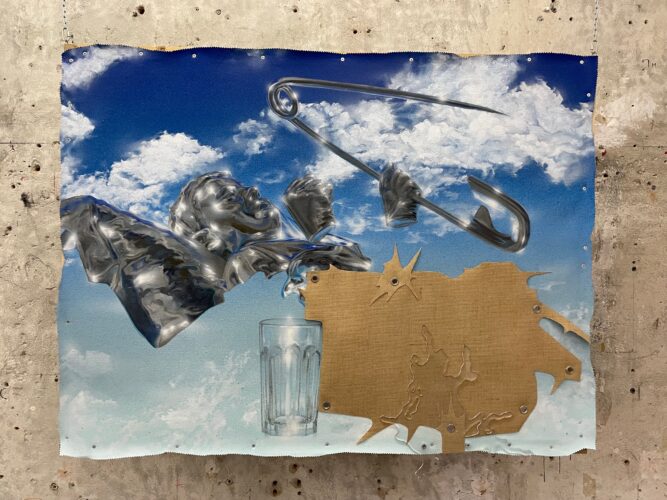
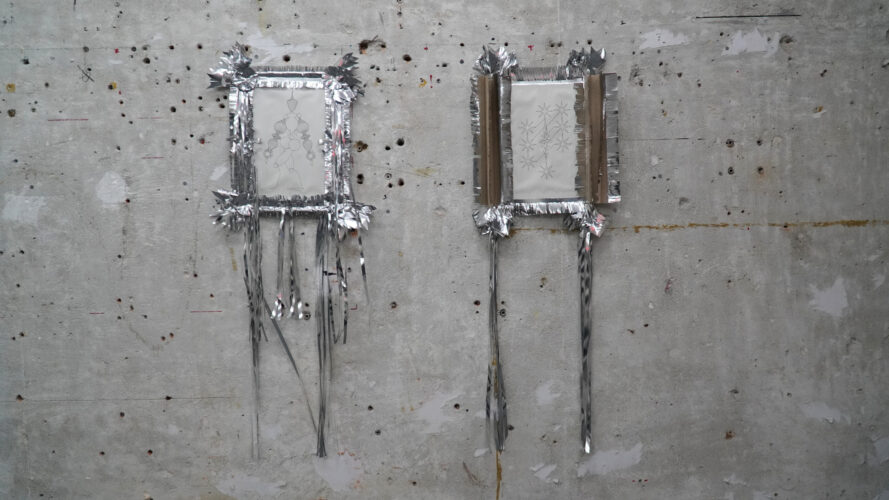
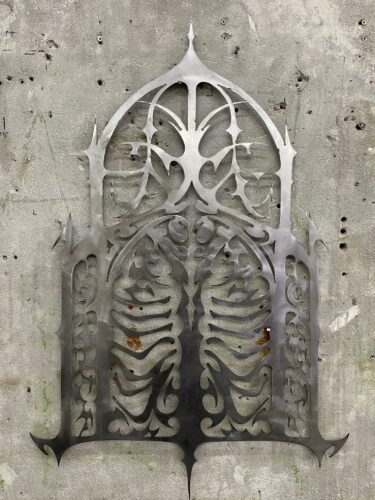
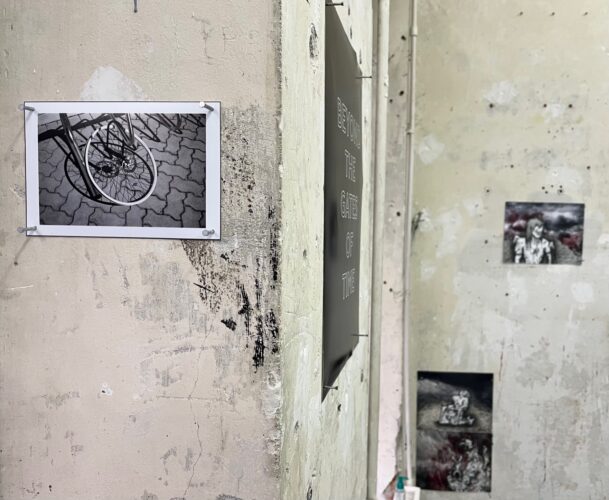
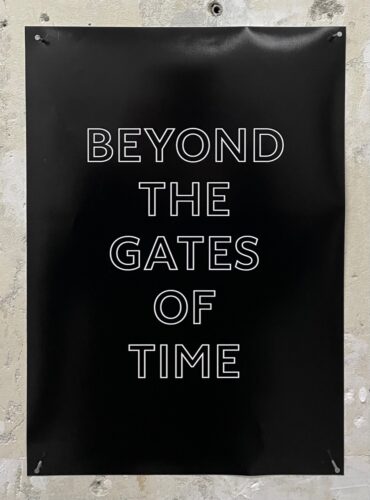
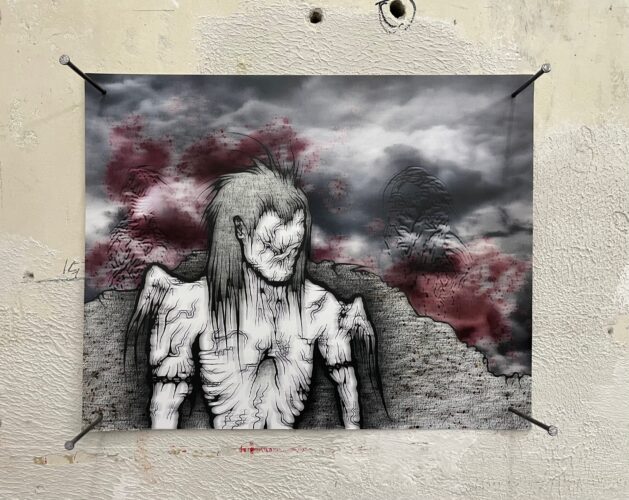
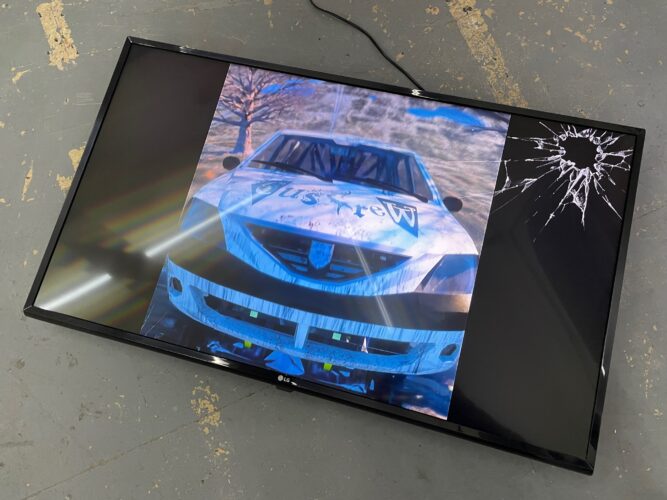
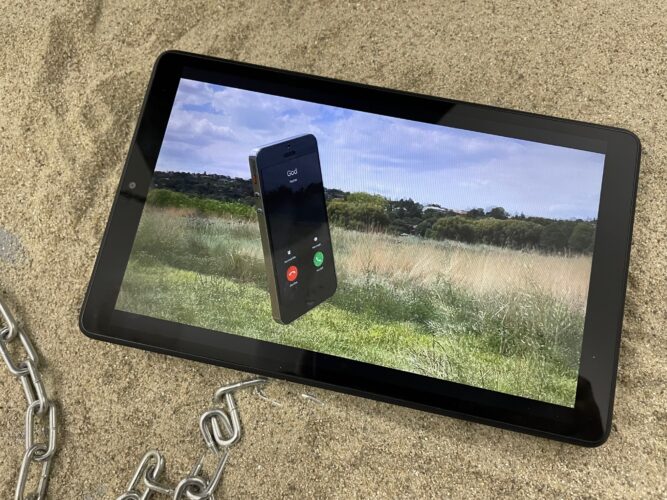
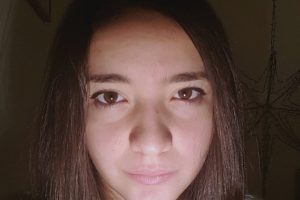
Comments are closed here.